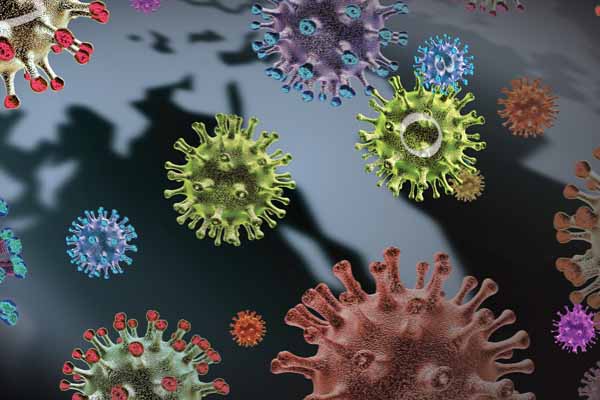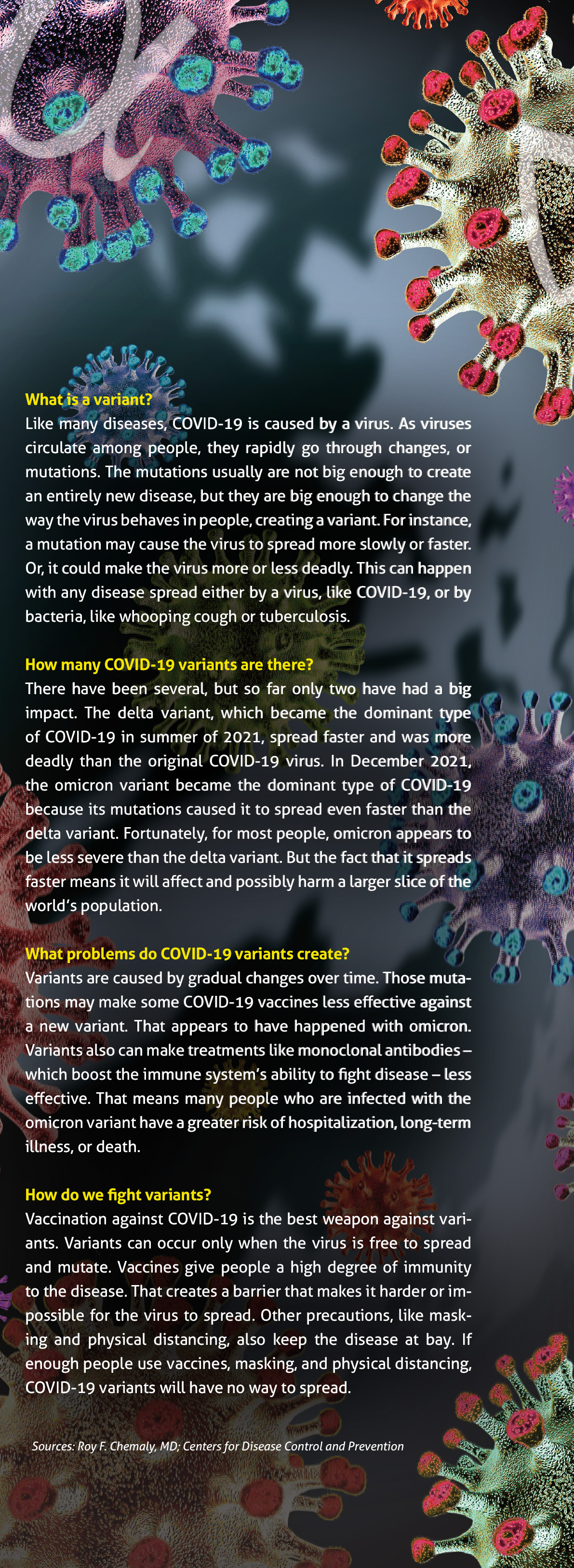
Alpha. Delta. Epsilon. Omicron. These and other variants of COVID-19 have made their way through the U.S. and Texas, and new ones will almost certainly be coming along.
Over seven weeks in May and June 2021, the highly transmissible delta variant shoved aside the original SARS-CoV-2 virus and any other variations circulating at the time to become the dominant COVID-19 variant in the U.S., according to the Centers for Disease Control and Prevention. Then in December, the still more transmissible omicron variant pushed aside delta to become dominant in about three weeks.
Variants are caused by slight mutations in the original virus, explains Roy F. Chemaly, MD, chief infection control officer and director of clinical virology research at The University of Texas MD Anderson Cancer Center in Houston. The mutations are not drastic enough to create a genetically new virus, but they are significant enough to change the way the virus behaves, making it more or less transmissible or virulent, for instance.
The changes found in each new variant pose two potential problems in fighting the disease, Dr. Chemaly says.
“First, the vaccine could be less effective, and with omicron it probably is,” he said. “Also, the treatment [for COVID-19], the monoclonal antibodies, may not be as effective.”
At the same time, however, the mutations that lead to variants can occur only if there are enough unvaccinated people around to be infected, Dr. Chemaly says.
Texas’ COVID-19 vaccination rate is about 63%, according to the Texas Department of State Health Services. That leaves 37% of the population vulnerable to COVID-19 and, in turn, heightens the risk that vaccinated people will get breakthrough infections. (See “Talk to Patients About: Breakthrough Infections,” October 2021 Texas Medicine, page 46, www.texmed.org/COVIDbreakthrough.)
“If we don’t stop [COVID-19] with herd immunity, with enough people vaccinated, it’s going to keep circulating at high levels,” Dr. Chemaly said. “In some hotspot areas, you may see new variants.”
There is a lot of misinformation about vaccines, so each month Texas Medicine highlights common concerns that patients raise about immunizations. This material is designed to help you talk to your patients and help them understand the benefits of vaccines. Find printable infographics and helpful videos for your patients at www.texmed.org/TalktoPatients and through Vaccines Defend What Matters, the Texas Medical Association’s integrated, multimedia public health education and advocacy effort, at www.texmed.org/VDWM.
